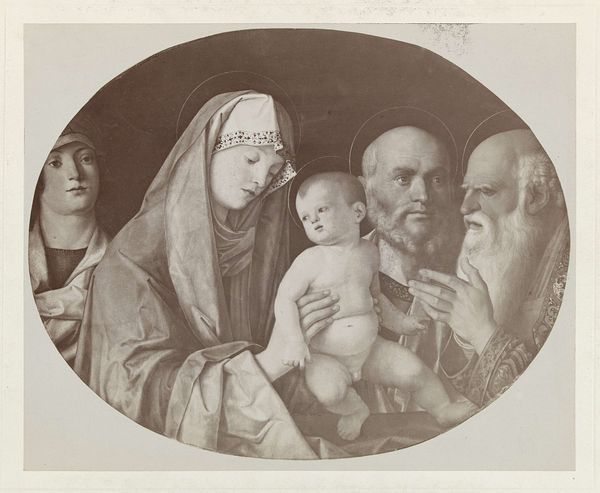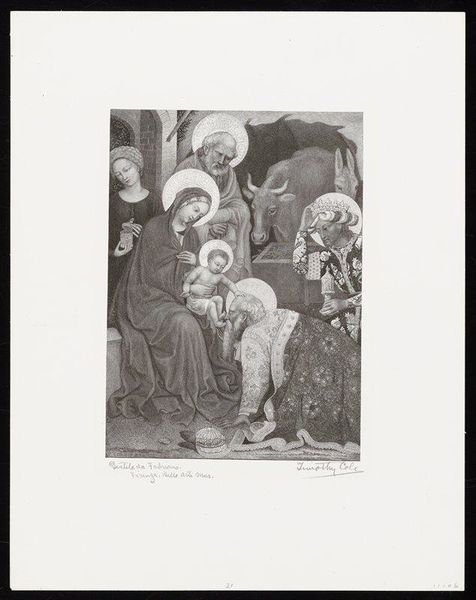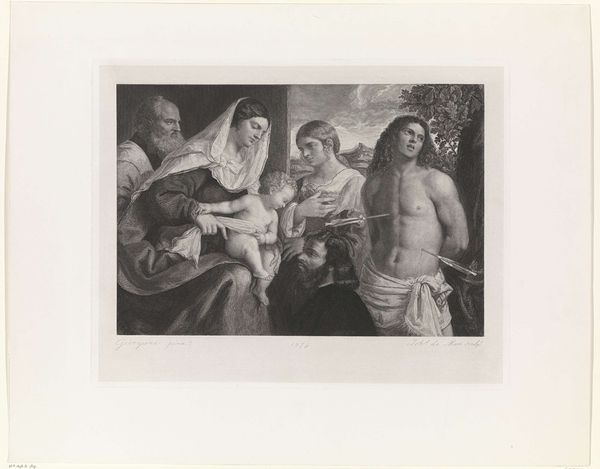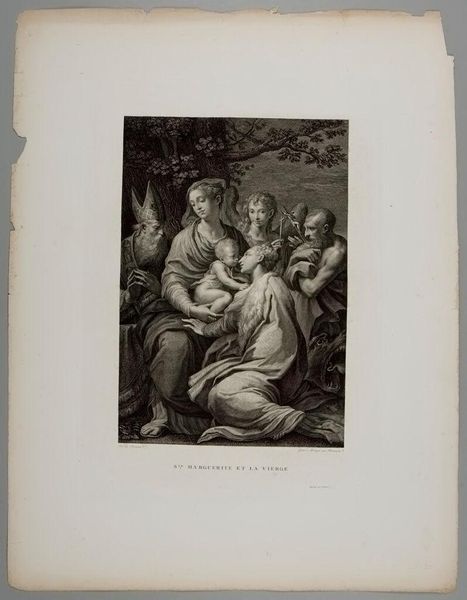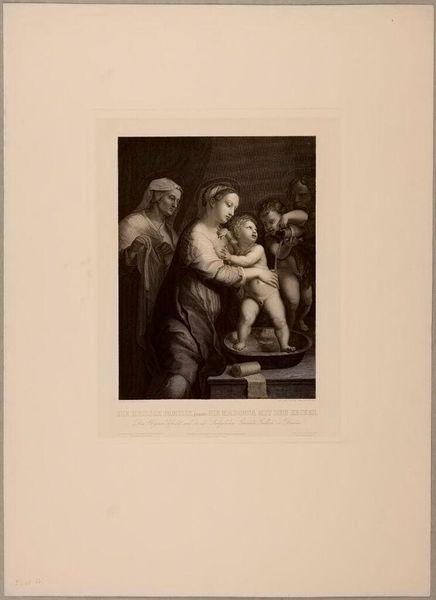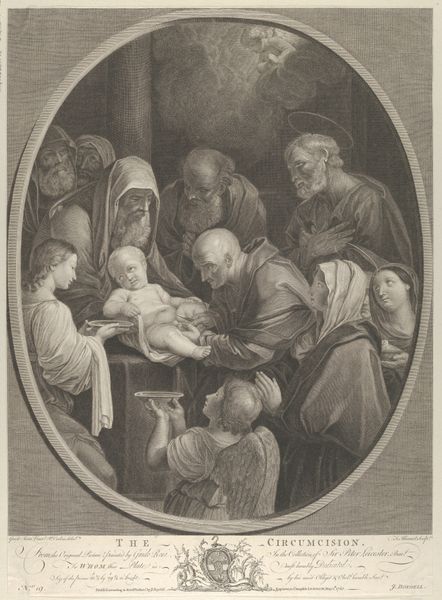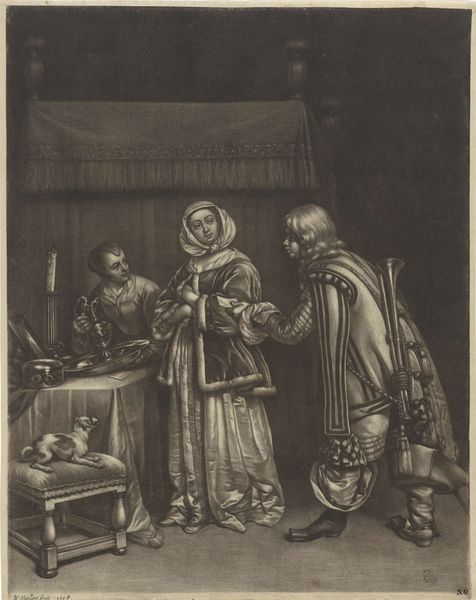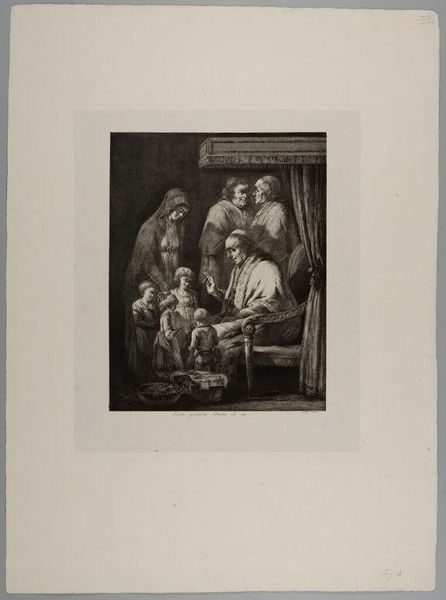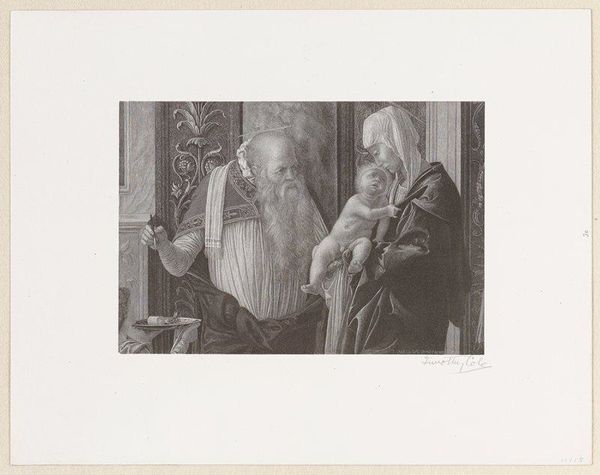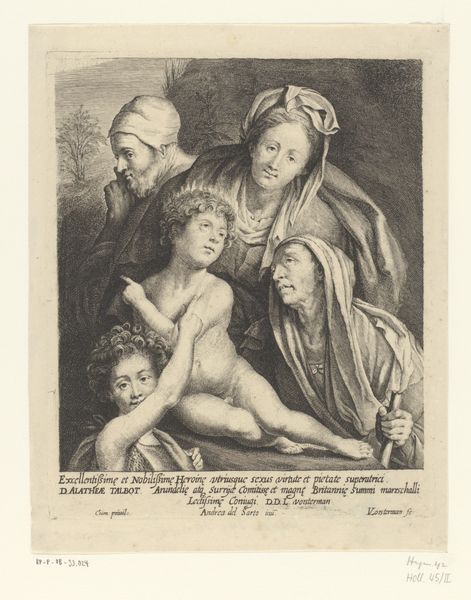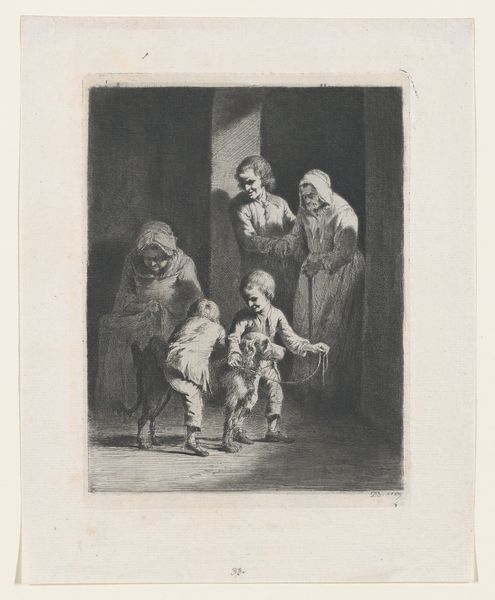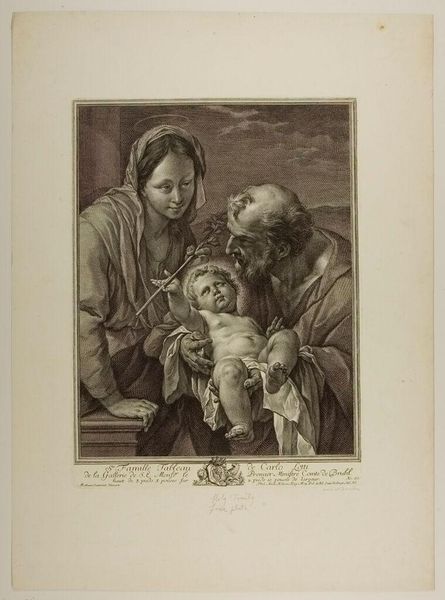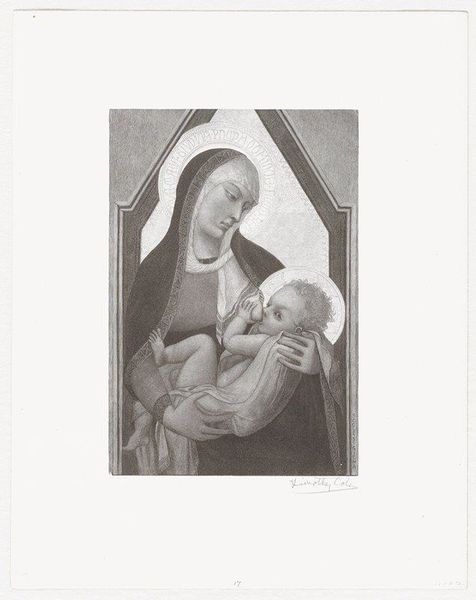
print, photography, gelatin-silver-print
#
portrait
# print
#
figuration
#
archive photography
#
photography
#
historical photography
#
framed image
#
gelatin-silver-print
#
history-painting
#
academic-art
#
italian-renaissance
Dimensions: height 197 mm, width 244 mm, height 241 mm, width 327 mm
Copyright: Rijks Museum: Open Domain
Curator: Here we have an archival gelatin-silver print, titled “Schilderij De presentatie in de Tempel,” dating from around 1880 to 1904 and attributed to Edizione Brogi. It depicts, as the title suggests, the presentation of Jesus at the Temple. Editor: Okay, first impression? Kinda spooky, like a scene from a vintage horror flick. The stark contrast, the veiled figures...there's this strong feeling of solemnity, almost dread. And everyone looks so serious, like they’re staring right through you. Curator: That's an interesting reading. Contextually, this print is rooted in both Italian Renaissance artistic traditions and the growth of photography as a means of disseminating art historical knowledge. The image reproduces a history painting illustrating a key moment of sacrifice and recognition in Christian theology, when, forty days after birth, a ritual purification was required by the Mosaic Law, the mother bringing her child before the Lord. It reflects complex socio-political elements present in late 19th-century visual culture as it also circulated across a rapidly growing network of public collections and private homes. Editor: It’s heavy, you know? All that religious weight. But there's something undeniably powerful in the composition too. How all eyes, even the baby's, converge at this central point, a convergence charged with unspoken rules. And while the solemn atmosphere isn't my thing, this print absolutely does grab your attention. Curator: Yes, and consider the politics inherent in such presentations. The ritual offering speaks to prescribed gender roles. It emphasizes lineage. Also, who decides what moments are worth immortalizing through painting, print, photography, and archiving? And why? It makes me think of the power structures inherent within representation itself. Editor: Makes you wonder what was cropped out, doesn't it? Who's just beyond the frame, judging, waiting their turn? It makes you think beyond what you actually see. That’s the cool part, how it starts these endless questions... it almost dares you to keep questioning. Curator: Precisely, it offers a stark vision of established religious and cultural values at a critical moment in Western social transformation, encouraging reflection on its meanings across temporal, geographical, and cultural boundaries. Editor: Okay, I admit it, maybe the presentation isn't all dread and gloom, maybe there’s this layer of unexpected intensity – almost like they know something we don't!
Comments
No comments
Be the first to comment and join the conversation on the ultimate creative platform.
